
Sense Memory: Donna Ray at MAAHMG
Published January 16th, 2024 by Pauline Moll
The ceramicist touches on women's equity, gender fluidity, and geographic location – and allows you to touch the artwork, as well
I emerge off the elevator on the fourth floor of the Regional Acceleration Center to the Minnesota African American Heritage Museum and Gallery (MAAHMG), a brightly-lit corner setup overlooking Plymouth and Penn Avenue. I tell the woman behind the desk, “I’m with MPLSART, and I’m here to see the Donna Ray exhibit.”
“Well, the exhibit is right there,” she says simply, “and my name is Donna Ray.”
“Oh!” I am surprised and suddenly flustered. Wearing a royal purple shirt and black sunglasses, Ray smiles and reaches out to shake my hand.
Leave it to good fortune to let me meet the artist unintentionally when visiting Ray’s exhibit, titled Women’s Equity and Gender Fluidity (3A’s) Education, Finance and Real Estate — a collection of ceramic pieces exploring financial, social, and geographic mobility for women in Africa, Asia, and the Americas (the “3A’s”). Ray also engages gender fluidity, disability, and spirituality in this exhibition; her focus feels expansive and intersectional. Using vivid colors and more muted tones, combining organic shapes with man-made materials and found objects from nature, Ray’s ceramics are absolutely captivating.
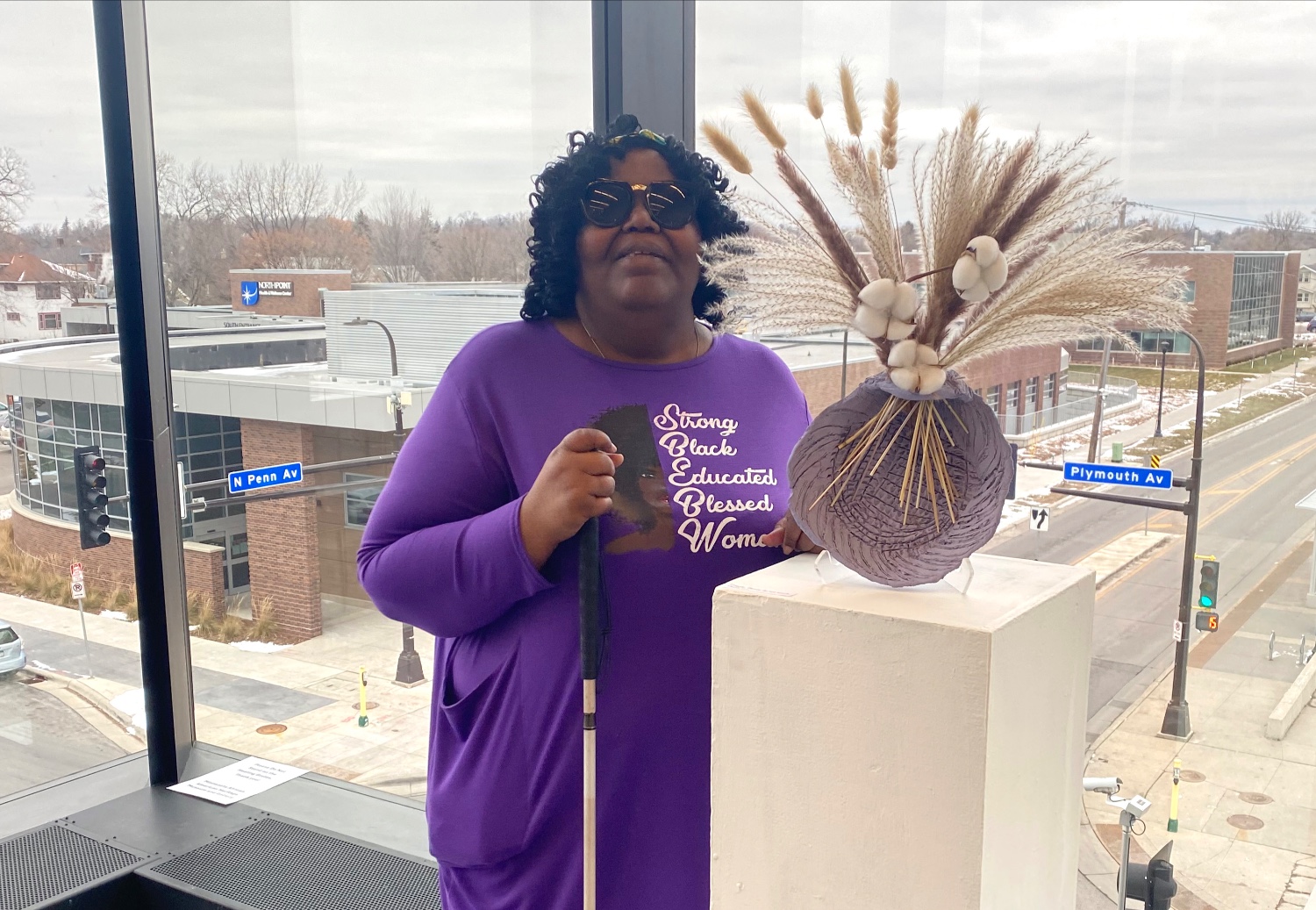
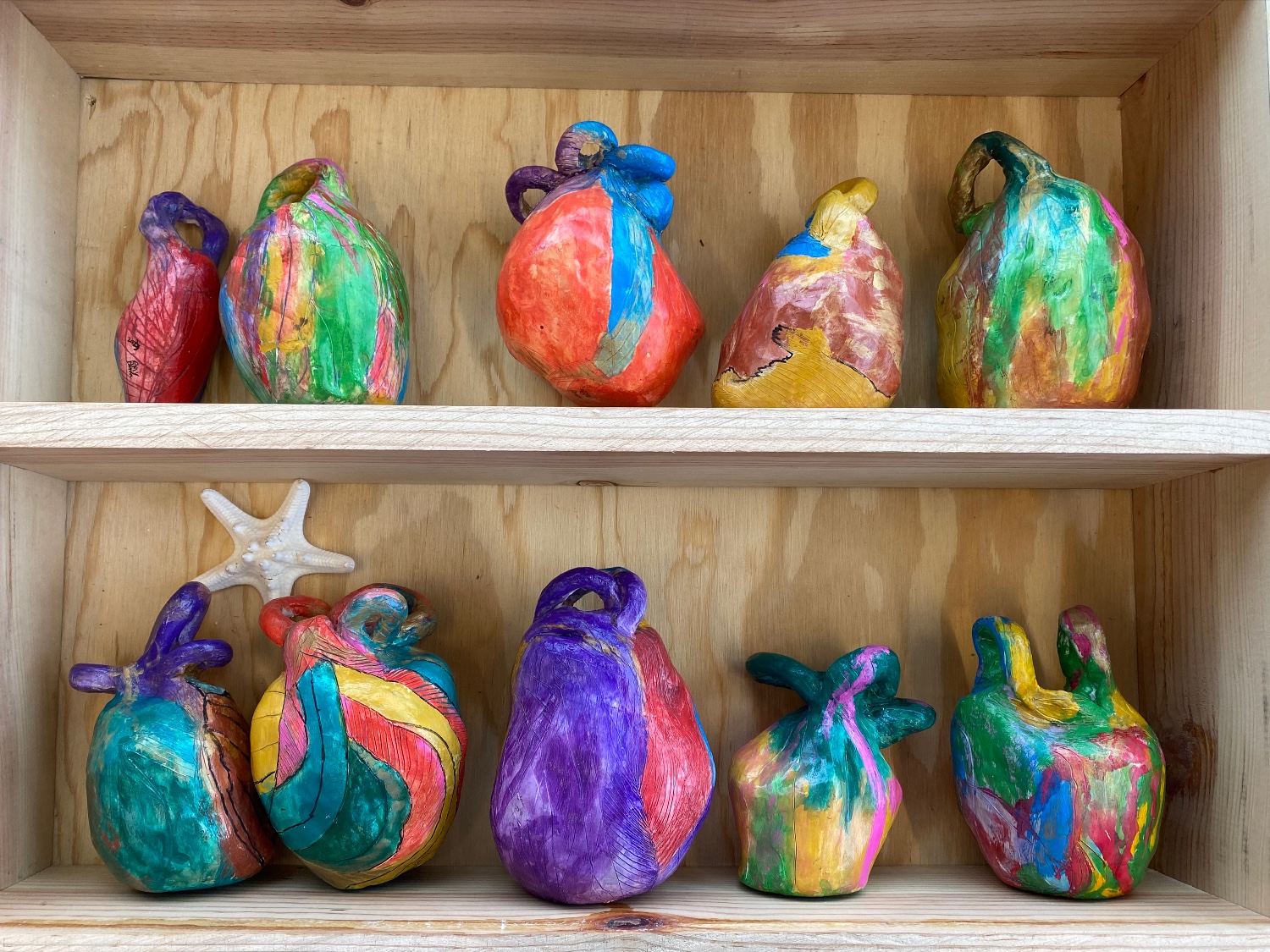 Top: Donna Ray at the MAAHMG. Bottom: Ray's ceramic works. Photos by Pauline Moll.
Top: Donna Ray at the MAAHMG. Bottom: Ray's ceramic works. Photos by Pauline Moll.
In the center of the gallery are two ceramic slabs, which Ray calls “scrolls” or “puzzles,” with lines and lines of text on them. Scattered throughout are the names of states, countries, and people, as well as words relating to the exhibition’s themes. A sign posted nearby gives patrons suggestions of what to search for in the puzzle. I chat with the patron next to me, who immediately finds “Rihanna Fenty” among the letters. At the desk, Ray collects slips of paper with patrons’ zip codes and their mothers’ zip codes. She tells me she intends to incorporate these locations in her next puzzle. Representing her own story as well as community members’ stories in her artwork is vital to Ray. As I look through the puzzle using one of the provided magnifying glasses, I am not expecting to see “Panama,” one of the places I grew up, swimming among the other words — but there it is, and there I am.
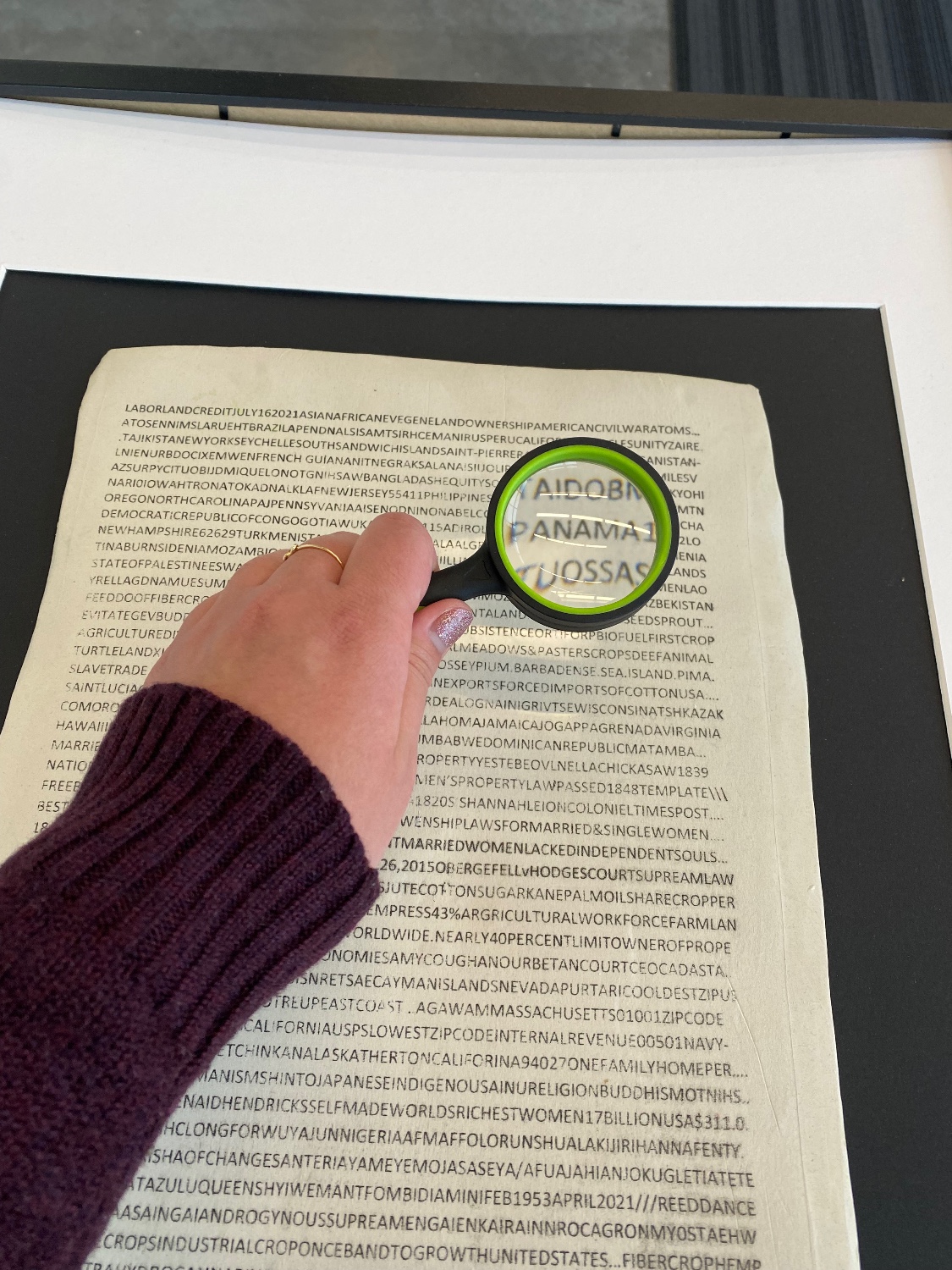
As I make my rounds seeing the pieces, Ray makes her rounds talking to patrons. I hear her talk to them about their hometowns and their interest in the museum. Eventually, she returns to me. “Do you want to touch the art?”
I am taken aback for the third time, and I reveal as much by replying, “I can touch the art?!” Ray is a visually impaired artist, and she offers patrons the chance to experience her ceramics through another sense, with her guidance, when she is present at the exhibit. She hooks her arm into mine and leads me to three sculptures of deities, one each from oral traditions of the Americas, Africa, and Asia. In front of the first deity, Ray takes my wrist and guides my hand to touch. I close my eyes and feel the ridges of the clay under my fingers. The texture is repetitive, rough, inviting. It is perhaps my underdeveloped sense of touch in appreciating visual art that tells my brain, simply, This feels cool!
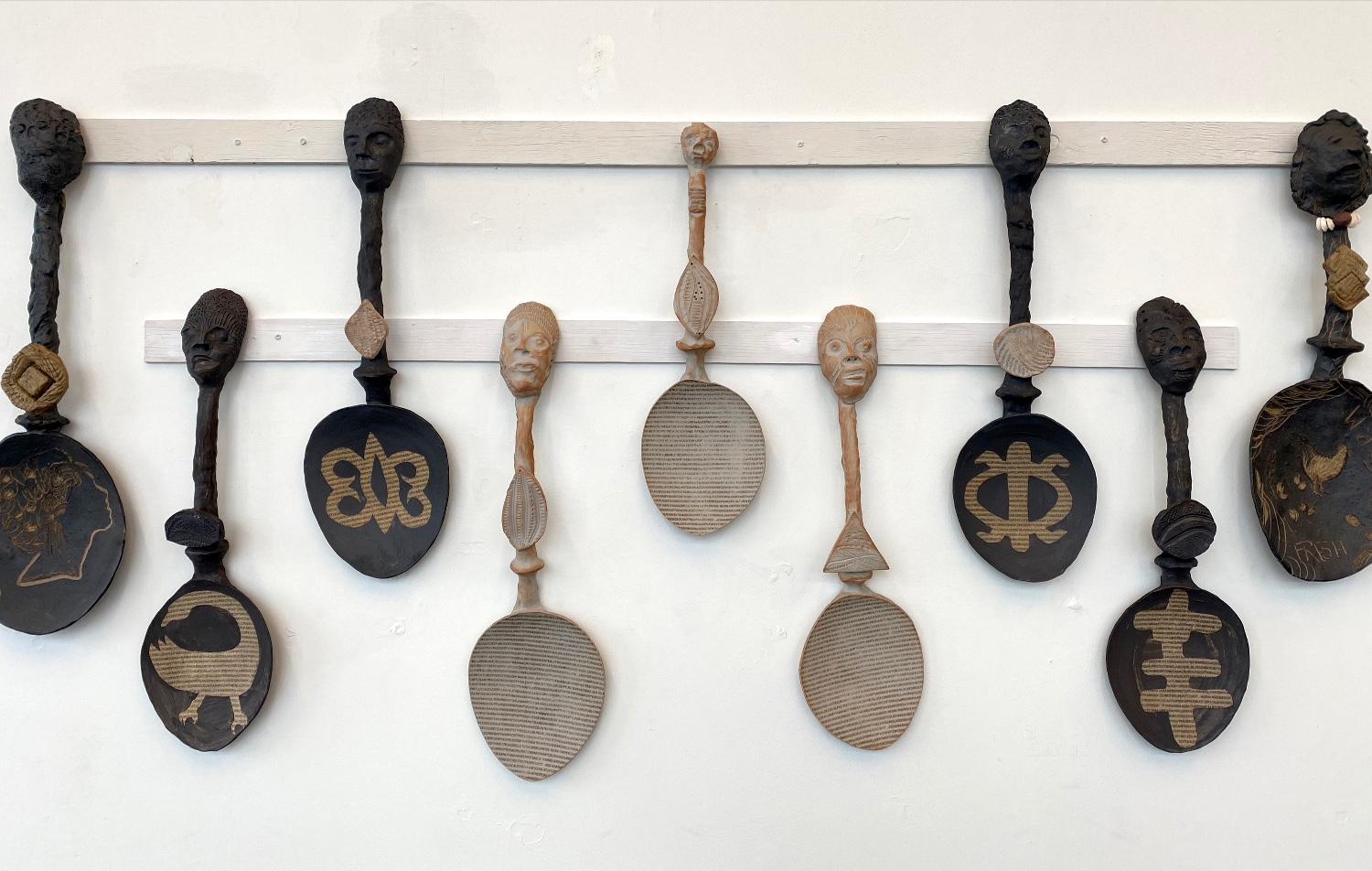

While I explore, Ray tells me the stories of the three deities: one who is the grandmother of the earth; one who embodies both divine feminine and masculine energies; and one who watches over travelers, wanderers, and the displaced. In her choice of these three goddesses, I see the nexus of Ray’s interest in maternal lineage, gender fluidity, and diaspora.
On my way out, I pay for my visit and shake Ray’s hand again. I ask her what she’d like to say to the audience. She holds my hand tenderly in both of hers and says, “Remember where you came from. Learn as much as you can about your history and who you are.” ◼︎
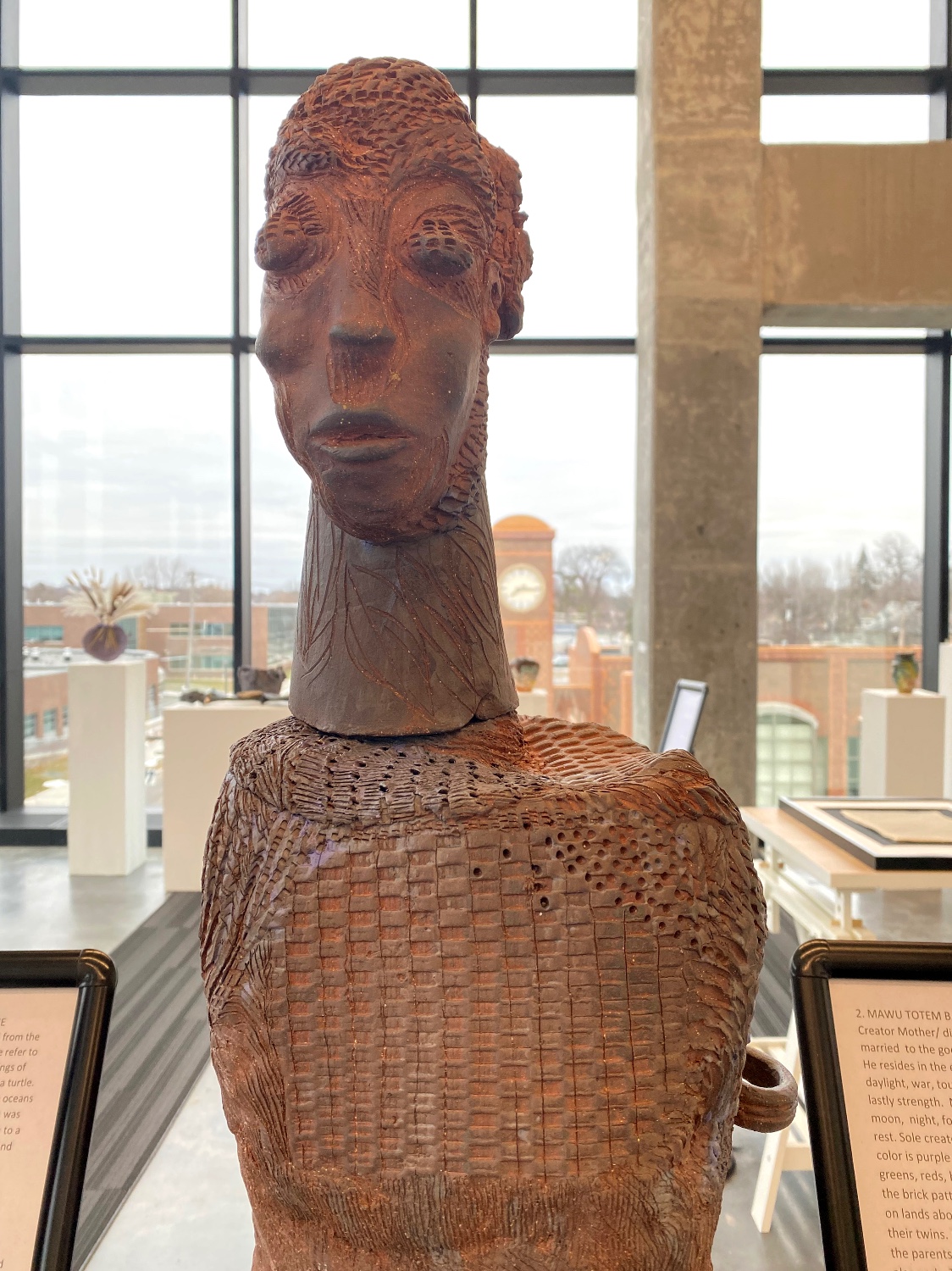
Donna Ray is an artist-in-residence at the Minnesota African American Heritage Museum and Gallery, open Tuesday – Friday from 1pm – 5pm and Saturday from 10am – 2pm. Women’s Equity and Gender Fluidity (3A’s) Education, Finance and Real Estate is on view through February 3. Admission is free; cash and card donations are accepted. The author encourages fellow non-Black museum-goers who regularly visit paid exhibits to make a comparable donation when attending.
There will be an artist's talk on Thursday, January 25, 6:30 – 7:30pm.
To see more of Donna Ray's work, follow her on Instagram @spiritmovesdonna.
This activity is made possible by the voters of Minnesota through a grant from the Metropolitan Regional Arts Council, thanks to a legislative appropriation from the arts and cultural heritage fund. 
We can't do it without you.
Help keep independent arts journalism alive in the Twin Cities.